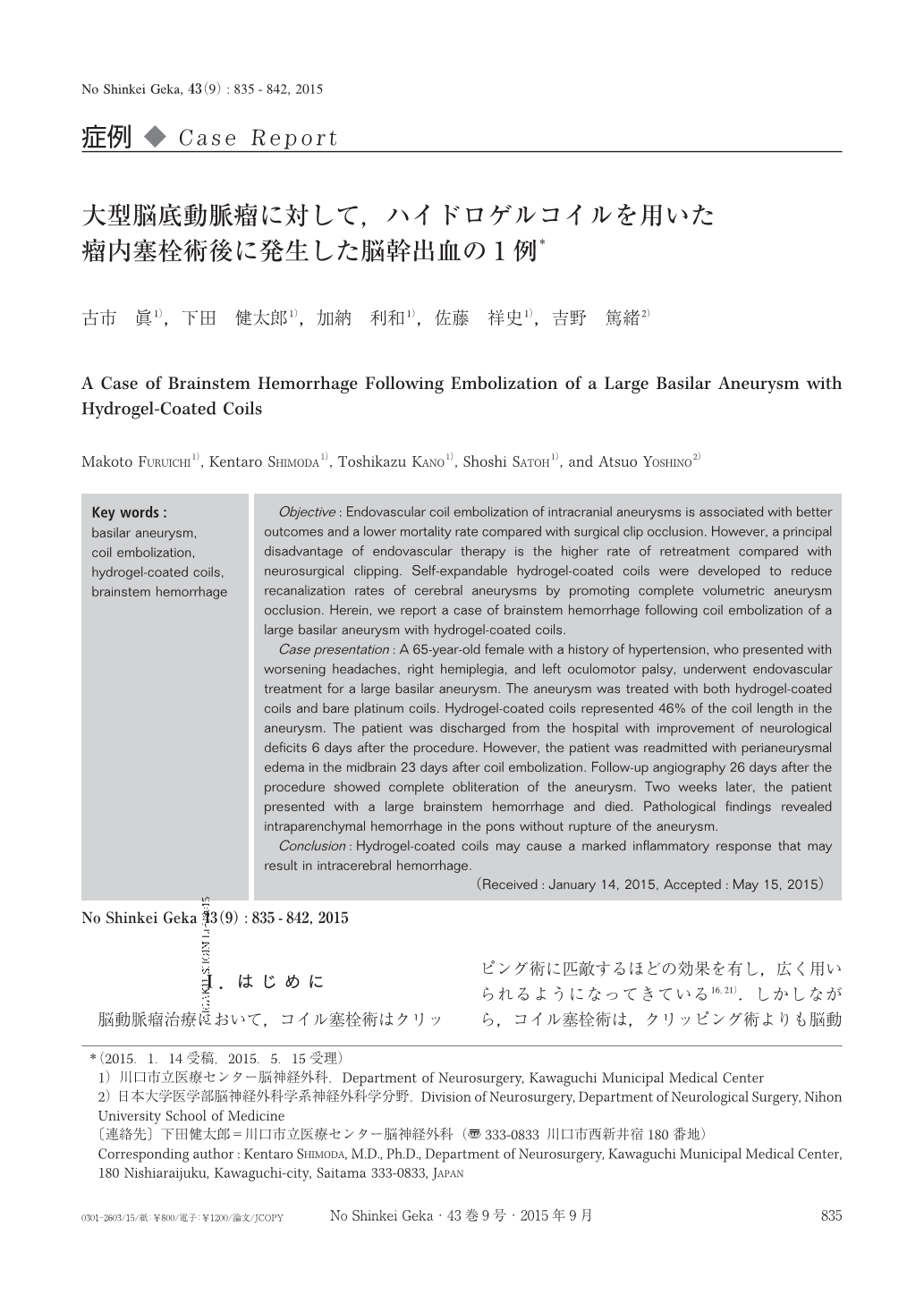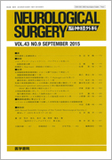Japanese
English
- 有料閲覧
- Abstract 文献概要
- 1ページ目 Look Inside
- 参考文献 Reference
Ⅰ.はじめに
脳動脈瘤治療において,コイル塞栓術はクリッピング術に匹敵するほどの効果を有し,広く用いられるようになってきている16,21).しかしながら,コイル塞栓術は,クリッピング術よりも脳動脈瘤の再開通率が高く,その頻度は約20〜40%である19,23).そこで,再開通率を低下させるために,ハイドロゲルコイルが開発された.このコイルは高分子吸水性ポリマーであるハイドロジェルでコーティングされている.血液に触れることによって最外層の保護コーティングが溶解し,ハイドロジェルが水分を吸収し膨張を開始するという特徴をもつ.その後,20〜30分で最大容積に達し,高い体積塞栓率を示すことによって再開通率を低下させる3).一方で,ハイドロゲルコイルは頭痛,水頭症,髄膜炎といった合併症の問題が指摘されている1,6,9,10,15).今回,われわれはハイドロゲルコイル使用後約1カ月で脳幹出血を認め死亡した大型の脳底動脈-上小脳動脈分岐部動脈瘤の1例を経験したので,文献的考察を加え報告する.
Objective:Endovascular coil embolization of intracranial aneurysms is associated with better outcomes and a lower mortality rate compared with surgical clip occlusion. However, a principal disadvantage of endovascular therapy is the higher rate of retreatment compared with neurosurgical clipping. Self-expandable hydrogel-coated coils were developed to reduce recanalization rates of cerebral aneurysms by promoting complete volumetric aneurysm occlusion. Herein, we report a case of brainstem hemorrhage following coil embolization of a large basilar aneurysm with hydrogel-coated coils.
Case presentation:A 65-year-old female with a history of hypertension, who presented with worsening headaches, right hemiplegia, and left oculomotor palsy, underwent endovascular treatment for a large basilar aneurysm. The aneurysm was treated with both hydrogel-coated coils and bare platinum coils. Hydrogel-coated coils represented 46% of the coil length in the aneurysm. The patient was discharged from the hospital with improvement of neurological deficits 6 days after the procedure. However, the patient was readmitted with perianeurysmal edema in the midbrain 23 days after coil embolization. Follow-up angiography 26 days after the procedure showed complete obliteration of the aneurysm. Two weeks later, the patient presented with a large brainstem hemorrhage and died. Pathological findings revealed intraparenchymal hemorrhage in the pons without rupture of the aneurysm.
Conclusion:Hydrogel-coated coils may cause a marked inflammatory response that may result in intracerebral hemorrhage.

Copyright © 2015, Igaku-Shoin Ltd. All rights reserved.


